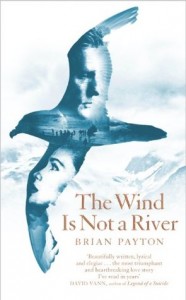The Wind Is Not a River
After his brother’s death in World War II and an argument with his wife, journalist John Easley heads north to Alaska’s Aleutian Islands to cover the untold story of the Japanese invasion and occupation of American soil. He sneaks aboard an American plane on a bombing run when it is subsequently shot down, leaving only John and one young soldier left alive. Finding shelter in a cave, the two must battle the harsh elements – and their own demons – to stay sane and to stay alive. Back home, John’s wife, Helen, decides to leave her ailing father, adopt a new persona, and embark on a journey to find John. Their separate journeys, and those of the people they meet along the way, reveal the determination of the human spirit, the power of love, and the heartbreaking toll of war.
 The Wind Is Not a River is one of those quiet novels that stays with you because of the cadence and perceptive simplicity of the language. Deep in the night in his isolated cave, Easley remembers Helen only as a “series of sensations” and yet still feels the healing power of her kiss. In describing soldiers’ photo collages near their bunks, Payton writes, “There are the standard-issue Betty Grables and Rita Hayworths, but also snapshots of mothers and girlfriends representing a remarkable range of sizes and orthodontic predicaments. One boy has a picture of his horse.”
The Wind Is Not a River is one of those quiet novels that stays with you because of the cadence and perceptive simplicity of the language. Deep in the night in his isolated cave, Easley remembers Helen only as a “series of sensations” and yet still feels the healing power of her kiss. In describing soldiers’ photo collages near their bunks, Payton writes, “There are the standard-issue Betty Grables and Rita Hayworths, but also snapshots of mothers and girlfriends representing a remarkable range of sizes and orthodontic predicaments. One boy has a picture of his horse.”
After the first couple of chapters, I had already guessed the outcome of the story and was a bit disappointed that it turned out to be so predictable. But that didn’t detract from my overall enjoyment. Recommended.






